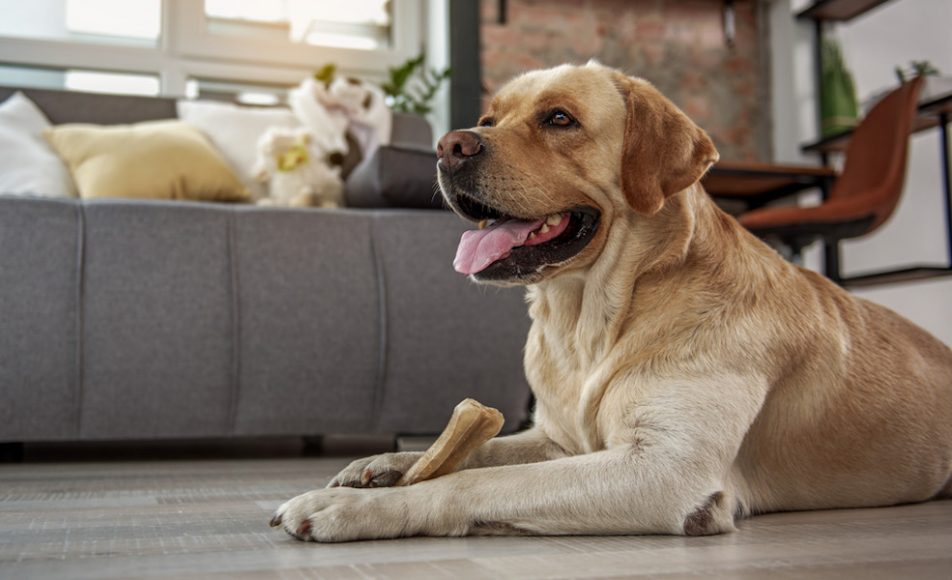Adopting a dog is a wonderful experience. What could be more exciting than adding a loving new member to your family? (It’s certainly become a big trend in the coronavirus era, as pets help you to de-stress and focus on what’s important.)
Those first few days are often more difficult than new owners expect, though. Being adopted can be stressful for dogs, even if they are happy to have a home. There’s also a natural period of acclimatization for both you and your pet.
To help make the initial period as smooth as possible, here are five tips for dog adoption.
1. Don’t overwhelm your dog.
Moving into a new home is stressful for any dog. There are new smells, different people and everything is unfamiliar. While it’s important to start forming a bond with new pets, you also don’t want to overwhelm them during those first few days.
Start by creating a quiet and secluded place for your dog to rest. An open and covered crate can be brilliant for this, although not all dogs take to them immediately. A soft and supportive bed in a quiet corner can work, too.
Make a rule that dogs are never disturbed in their safe space. It’s important that your pets know there is somewhere to retreat when they need a break.
While giving lots of love is essential, new dogs need lots of calming downtime. This is particularly important if there are children in the house. Make sure you mix love and games with quiet time.
On a related note, it’s best to avoid visitors during the first few days. While your friends and family will be desperate to meet your pet, this adds more of stress to your dog’s acclimatization period.
2. Make sure your home is safe.
The average home contains many potential dangers for dogs. Your new pet won’t understand boundaries, so it’s important to thoroughly dog-proof your house.
Some of the most common dangers include:
• Cleaning Chemicals. All cleaning chemicals should be kept in a locked cupboard. Many of these contain highly toxic substances.
• Medication and herbal remedies. Eating prescription and over-the-counter medication is the most common way for a dog to be poisoned. Keep medications and supplements in a place your dog can’t access.
• Human foods. A variety of human foods are toxic if eaten by dogs. These include grapes, chocolate, garlic, onions and avocados. Xylitol, the artificial sweetener, is also highly toxic.
• Electric cables. The modern home is filled with cables, which can be a chew target for some dogs. Make sure all cables are either hidden or protected with a cover.
• Toxic houseplants. Aloe, jade, sago and other common houseplants are dangerous if ingested by a dog. Identify and check the safety of all plants before bringing your new dog home.
• Garden security. Check fences and hedges for gaps, as many dogs are inquisitive and will quickly find escape routes.
3. Pay close attention to advice given by the shelter.
Shelters build up profiles of all their dogs through tests and observation. This allows staff to identify potential behavioural issues, such as food possessiveness, separation anxiety and suitability for re-homing with other dogs.
Make sure you pay close attention to this advice. If the shelter tells you that the dog shows signs of toy possessiveness, for example, then don’t try to grab a toy from the dog’s mouth. And if the dog is nervous around children, don’t invite small kids for a meet during the settling-in period.
Keep in mind that behavioural issues are often amplified when a dog is anxious. Don’t attempt to “test” your dog. Just give your pet time to adapt to a new environment.
4. Don’t leave your dog home alone.
One of the most common mistakes is leaving an adopted dog alone too soon. While you want to give your new pet space, leaving the dog “home alone” can lead to stress, separation anxiety and destructiveness.
For this reason, it’s important that there is always someone at home during the first few days — even if that means you need to take some time off from work. Clear your calendar during this time, as the initial period is vital for bonding with your new pet.
Once your dog has settled in and is more relaxed, you can gradually build up alone time. Start with just a few minutes and increase the time until the dog is happy to be alone for 20 to 30 minutes. It’s a good idea to record your dog to check for signs of stress.
When the dog can cope with 30 minutes alone, it’s probably safe to leave for longer periods. No dog should be left for more than a few hours at a time though.
5. Be patient — This is just the beginning of your new life together.
Richard Cross is the editor of TheDogClinic.com. Reach him at richardcross@thedogclinic.com.




